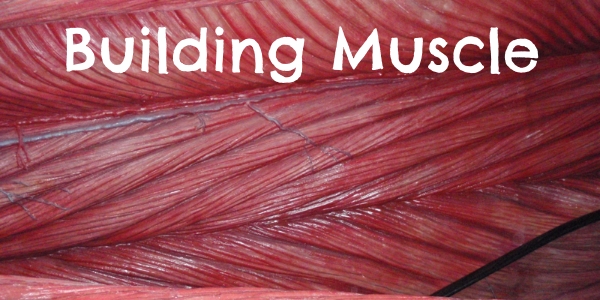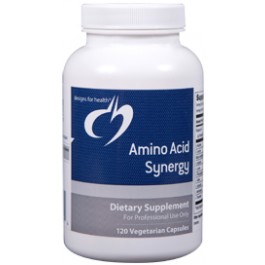
By Gene Bruno, MS, MHS – Dean of Academics, Huntington College of Health Sciences
Every bodybuilder knows the value and necessity of protein for supporting muscular...
By Art Presser, PharmD - President, Huntington College of Health Sciences
 Smart SupplementationTM is a free series of educational literature created by Huntington College of Health Sciences (HCHS) as a public service. Although copyrighted, it may be freely photocopied and distributed, but may not be altered in any way. Smart SupplementationTM is not intended as medical advice. For diagnosis and treatment of any medical condition, consult your physician.
Smart SupplementationTM is a free series of educational literature created by Huntington College of Health Sciences (HCHS) as a public service. Although copyrighted, it may be freely photocopied and distributed, but may not be altered in any way. Smart SupplementationTM is not intended as medical advice. For diagnosis and treatment of any medical condition, consult your physician.
Amino acids are the building blocks of proteins, and the end-result of protein digestion. That is, the body digests protein into individual amino acids and then rebuilds them back into protein. Next to water, protein is the most abundant substance in the body. The body requires approximately twenty-two amino acids in a specific pattern to make human protein. There are eight amino acids that the body cannot make and must get through food or supplement. They are lysine, methionine, leucine, threonine, valine, tryptophan, isoleucine, and phenylalanine.
When used individually as supplements, particular amino acids may perform specific functions rather than the general function of a complete protein. For example, taking carnitine may help you lose weight; eating a hamburger would not.
Arginine is a non-essential amino acid. Given the proper internal environment, the body can manufacture it. It helps maintain the body’s nitrogen equilibrium, is involved in waste detoxification, moderates glucose tolerance, and promotes wound healing and bone repair. It moderates immune activity in the thymus gland, and is involved in the formation and activation of sperm. Because nitric oxide, a potent body vasodilator, is made from arginine, research points to its value in cardiovascular function and male erectile dysfunction. Arginine is a stimulator of growth hormone, in addition to a host of other important hormones.
Carnitine is a non-essential amino acid. Given the proper internal environment, the body can manufacture it. Found mainly in heart and skeletal muscle, it plays an important role in fat metabolism and energy production. It transfers fat into the energy-producing structures in muscle cells, called the mitochondria, where it can be burned for fuel. In the mitochondria, its primary function is to oxidize fatty acid chains for energy production. Carnitine offers benefits to cardiovascular health, weight management, sports nutrition, and fertility.
Cysteine is a non-essential amino acid. Given the proper internal environment, the body can manufacture it. It is a sulfur-containing compound giving it antioxidant and detoxifying properties. That is, it is a highly effective scavenger of free radicals, as well as a detoxifier of the toxic waste products. Cysteine is also a valuable transporter of toxic heavy metals out of the body, and further provides important functions during protein synthesis, in addition to being involved in DNA repair. It is also a component of the antioxidant tripeptide, glutathione. Cysteine’s metabolite, cystine, is present up to 22% in the protein of nails, and up to 41% of the protein in skin and hair, making it a vanity amino acid.
Cysteine, in symphony with B-1 and C, assists in the detoxification of acetaldehyde. Acetaldehyde is found in cigarette smoke and smog, and is produced in the liver and cells from the metabolism of alcohol. It has also been shown to be a protector of cells exposed to radiation.
A potent form of cysteine, called N-acetyl- cysteine, has shown research interest in cancer, heart disease, and AIDS.
Glutamine is the most abundant amino acid in the body. Until recently, it was considered to be non-essential. However, now it is considered to be "conditionally essential," meaning that under normal circumstances, the body can synthesize enough, glutamic acid, but in times of stress such as fever, illness, dieting, injury or other trauma, the body cannot make what it needs. During these crisis periods, the body steals from muscle cells.
Glutathione is a detoxifier, and protector against radiation damage. It helps prevent oxidation of cellular membranes, is involved in red blood cell production, is a glucose tolerance factor, an immune stimulant, participates in cellular respiration, and is an amino acid transporter.
Lysine is an essential amino acid. The body cannot manufacture it, so it must be obtained for food or supplement. Among the many functions of Lysine is its ability to help form collagen and repair tissue in the body. It plays a vital role in maintaining energy and building muscle protein and tissue repair, making it important to those with sports injuries. Lysine is also needed for antibody formation, bone formation, and the production of hormones and enzymes. It is often used to reduce the incidence of herpes infections.
Ornithine is a non-essential amino acid. Given the proper internal environment, the body can manufacture it from arginine. It is a growth promoter, immune enhancer, and detoxifier.
Phenylalanine is an essential amino acid. The body cannot manufacture it, so it must be obtained from food or supplement. It is a precursor to the neurotransmitter norepinephrine Glutamine is considered brain fuel because once passing the blood-brain-barrier, it is converted to glutamic acid, the only substance other than glucose that the brain uses for fuel. As a brain nutrient, glutamine has been shown to be helpful in fatigue, alcoholism and sugar cravings, and schizophrenia. It also promotes the regeneration of intestinal mucosa, and is a releaser of growth hormone.
Glutathione not actually an amino acid, but rather a combination of the amino acids glutamic acid, glycine, and cysteine. It is a tripeptide that has significant antioxidant activity, with the power to deactivate free radicals and render lipid peroxides harmless, in addition to being the precursor of the potent antioxidant enzyme glutathione peroxidase, an anti-aging enzyme.
and the hormone CCK (cholecystokinin). CCK is the chemical message sent to the brain telling it you are full after eating. Norepinephrine is similar in that it also tends to reduce hunger; but being an excitatory neurotransmitter it also helps to create positive feelings and a sense of mental energy or alertness. It is also needed by the thyroid gland and blood vessels.
A form of phenylalanine, called the DL form, is a potent stimulator of endorphins, naturally produced chemicals in the body that stop the sensation of pain, and create a sense of well- being. This form of phenylalanine has been used to allay chronic pain.
Tryptophan is an essential amino acid. The body cannot manufacture it, so it must be obtained from food or supplement. It is one of the most famous amino acids, having been involved in a scandal that resulted in the supplements being removed from store shelves.
In 1989 multiple reports of illness and a few deaths were linked to a single batch of this amino acid which was produced by a Japanese raw material supplier. Due to poor quality control procedures, a contaminant was able to enter the batch, adversely affecting a sensitive fermentation process involved in the manufacture of the amino acid. The result was that a chemical analog of L-Tryptophan was produced which looked like L-Tryptophan, but was not actually L-Tryptophan. It was the analog that caused all the problems. Sadly, L-Tryptophan was blamed, and this valuable amino acid was removed from the market (although it can still be obtained through prescription...an interesting development).
Tryptophan is used by the brain to produce serotonin, a relaxing neurotransmitter. It has the ability to reduce pain sensitivity, work as an anti- depressant, reduce anxiety and tension, and induce sleep.
Before tryptophan converts to serotonin it metabolizes to an intermediate called 5-hydroxy- tryptophan. The plant Griffonia simplicifolia contains significant amounts of 5HTP and can be standardized for it. Therefore we now have a substitute for tryptophan called 5HTP or 5- hydroxy-tryptophan.
Tyrosine is a non-essential amino acid. Given the proper internal environment, the body can manufacture it. Like phenylalanine, tyrosine is also an important precursor to the hormone cholecystokinin (CCK) and the neurotransmitter norepinephrine. Phenylalanine is actually converted into tyrosine in the body.
Tyrosine is important in the regeneration of red and white blood cells, the development of cells and tissues, and the activity of the adrenal, pituitary, and thyroid glands. Because of its conversion to norepinephrine and dopamine, it is considered beneficial in overcoming depression, improving memory, and increasing mental alertness.
Branched chain amino acids (BCAA's), are three amino acids, leucine, isoleucine, and valine, in a molecular structure that finds a nitrogen group on one end, an acid group at the other, and various side chains attached to this basic configuration. They differ from other aminos in that they are metabolized in the muscles not the liver. Branched chain aminos offer potent anabolic and tissue sparing qualities, and yield metabolic by-products that boost energy production.
After BCAA's are ingested and absorbed into the blood stream, they are rapidly picked up by the muscle tissue. Muscles actually appear to be hungry for these particular amino acids. Once in the muscle, BCAA's act as nitrogen carriers to assist the muscle to synthesize other amino acids needed for an anabolic effect. Thus, they behave like anabolic steroids, except in a safe way.
BCAA's also function to allow circulating glucose to be taken up by muscle cells and used as an energy source. This is achieved through insulin activity that, in partnership with BCAA's also drives all other amino acids into the muscle to build more tissue.

By Gene Bruno, MS, MHS – Dean of Academics, Huntington College of Health Sciences
Every bodybuilder knows the value and necessity of protein for supporting muscular...

Amino Acid Synergy is useful as a general supplement to diets that are insufficient in quality protein, for athletes that require additional amino...